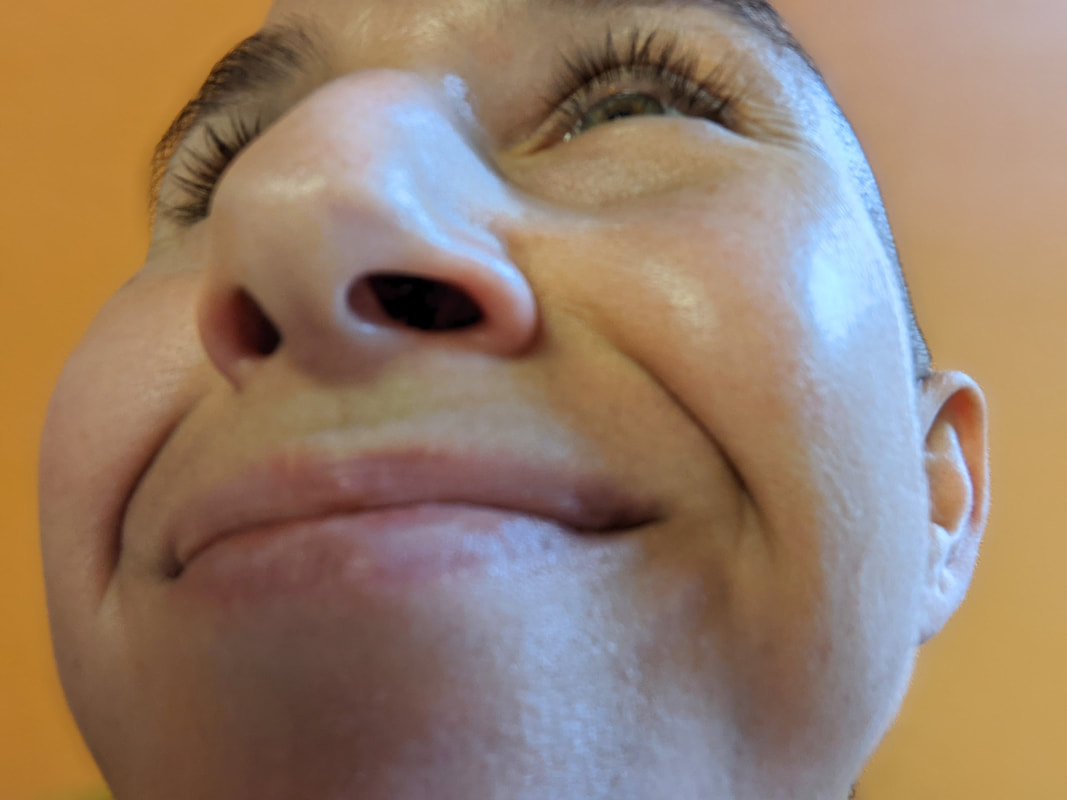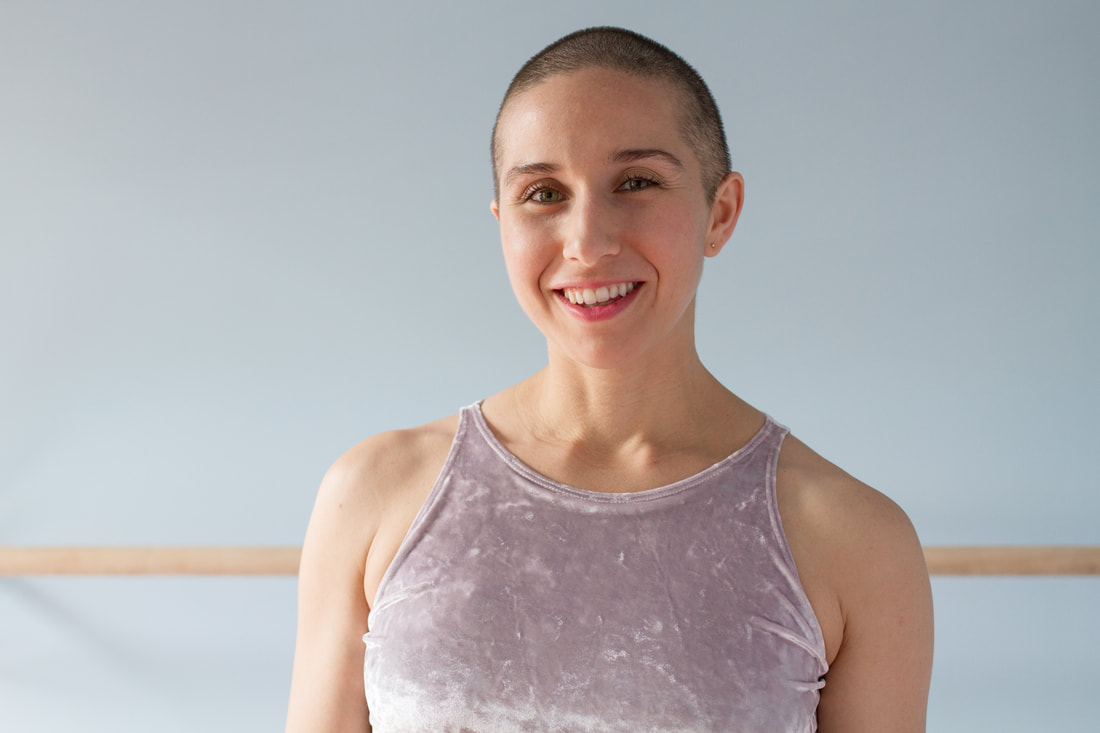|
“If we could master breath, everything after that is going to be handled a bit better.” That's a quote from James Newbury, an athlete who completed the entire 5-hour bike ride and 4-hour run of an Ironman race, breathing only through his nose. “We’re going to live at a higher level.” Living at a higher level sounds good. Here is my nose: Maybe you’ve been here:
Huffing and puffing through the first few poses in one of your first hot yoga classes, your face turning bright beet-red. The more you try to breathe, sucking air in through your mouth- the harder it seems to get. From somewhere in the distance, you hear the instructor’s calm, encouraging voice: “Close your mouth, breathe through your nose.” You try it. It works! Nose breathing is the way Many people have been taught or just naturally start breathing through their mouths while exercising, especially when it gets intense. But emerging research suggests nasal breathing (like we do for about 80 out of the 90 minutes in a Bikram Yoga class) is actually where it’s at. That’s no big surprise for yoga practitioners, who have been harnessing the power of breath for centuries! (But we always love when science backs up what we do!) Breathing by the nose helps athletes perform better For example, this recent study looked at runners who used nasal breathing and found their maximum rate of oxygen consumption was unchanged compared to mouth breathing. At the same time, their respiratory rates (breaths per minute) and ratios of oxygen intake to carbon dioxide output decreased, which means they didn’t have to work as hard to get the same amount of oxygen! Researchers believe the lower breath rate caused by breathing through your nose (a much smaller opening for air than your gaping maw) allows more time for oxygen to get to the bloodstream. That means you get more oxygen to your cells from each breath, which allows you to breathe less. Wait a sec? Is breathing LESS a good thing? Don’t worry: no one is telling you not to breathe. It’s about being efficient. By breathing through your nose "you actually can perform your big physical tasks – running, cycling, things like that, you can perform them using less oxygen because you're not having to breathe as much to perform them,” says researcher George Dallam. “Which turns this not just into a health thing, but also into a performance thing too.” Nose breathing helps with daily wellbeing too I recently read a fascinating book called Breath, by James Nestor. In it Nestor “explores the million-year-long history of how the human species has lost the ability to breathe properly and why we’re suffering from a laundry list of maladies—snoring, sleep apnea, asthma, autoimmune disease, allergies—because of it.” One thing Nestor did as part of this book was an experiment where he plugged his nose completely for 10 days, forcing himself to breathe only through his mouth. Spoiler alert: the results were disastrous! Other spoiler alert: everything got better when he began breathing through his nose again. Among other things, it turns out people who breathe primarily through their noses have:
Nasal breathing calms ya down Breathing slowly through the nose is associated with the parasympathetic aspect of your nervous system, known as the “rest, digest and reproduce” state. (You probably know that one from yoga class!) Breathing fast, through the mouth, or too much (hyperventilation) activates the sympathetic nervous system, putting you into a state of “fight, flight or freeze.” (You know that one from if you’ve ever been stressed out.) That’s because nasal breathing activates the lower part of the lungs, which is associated with the parasympathetic nerves. Oh hey, we made a video about that! “You’re dealing with what is called a vagal response,” Dallam says. “You’re actually activating your vagal nerve to do the action of the lung itself when you breathe that way. That’s why a relaxation breath is a deeper breath. If you breathe deeply and activate the diaphragm well, and activate the lower portion of the lung, then you create some immediate relaxation.” It ain't always easy, but it's worth it As James Nestor and James Newbury found, breathing by the nose during physical exertion isn't necessarily easy. The key, whether in a Bikram Yoga class or training for a triathlon, is to only challenge yourself as much as you can while maintaining nasal breathing. This means you may need to back off on intensity at first and be patient with the process. (Helloooo, psychological benefits!) When you breathe calmly through your nose, you take charge of your own nervous system The more you practice, the better you'll get at nasal breathing and the more your health will improve as a result. Don't take my word for it though! Try it in class today ;)
2 Comments
Dandayamana bibhaktapada paschimottanasana! This posture is not only the most fun posture to say the name in Sanskrit, but also a phenomenal stretch for your hamstrings, hips and spine. Because of the upside-down position, this pose provides increased circulation to the brain, nasal cavities and adrenal glands. It decompresses the spine, relieving pressure on the intervertebral discs and the spinal nerves (including the sciatic nerve) as well as having a pretty incredible effect on your cardiovascular system (see below...) Check out our video about how adjusting the size of your step can help you get the most out of this one: Have you heard of a baroreflex? "Baro" comes from the Greek baros, meaning pressure or weight. So the baroreflex is one of your body's mechanisms which helps maintain blood pressure at nearly constant levels. When you hang upside down in Standing Separate Leg Stretching, baroreceptors in your arteries sense that blood pressure to the head is elevated, and this starts a rapid feedback loop which causes the heart rate to lower and blood pressure to decrease to a more normal level.
Lower heart rate and lower blood pressure is associated with a calming sensation in the body, amirite? Which, if you think about it, means the placement of this pose in our series is simply genius! I mean, you just completed Balancing Stick pose, which got your heart beating out of your chest. And you're just about to do Triangle pose... But first, you get to do Standing Separate Leg Stretching, to bring your blood pressure and heart rate down, so by the time you hit Triangle you're operating on a much more even keel. Wow! What if you have sciatica? In this pose, a special consideration for those with active sciatica is that the feet should not be "slightly pigeon-toed." They should be parallel to one another, or even a little turned out. This takes pressure off the sciatic nerve during the pose. Want to deepen your understanding and get more goody out of your Bikram yoga practice? Check out these posts below for more videos from Kay, or search the archives for "tips!"
|
AuthorHHY Founder, Yoga Business Coach, yoga-doer and life-lover, Kay Afif! Categories
All
|



 RSS Feed
RSS Feed
